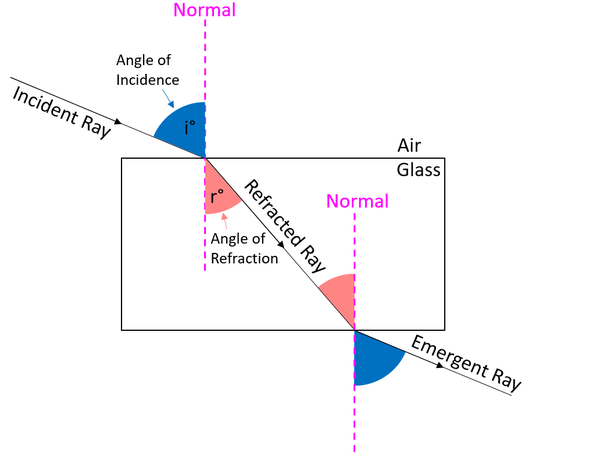Angle of Refraction
Contents
Key Stage 3
Meaning
The angle of refraction is the angle between the between the refracted ray and the normal.
About the Angle of Refraction
- When light travels from air into glass the angle of refraction is always smaller than the angle of incidence.
- When light travels from glass into air the angle of refraction is always greater than the angle of incidence.
Examples
| The angle of incidence is highlighted in pale red in this diagram. |
Key Stage 4 Higher
Meaning
The angle of refraction is the angle between the between the refracted ray and the normal.
About the Angle of Refraction
- When light travels from a less optically dense medium (such as air to a more optically dense medium (such as glass or water the angle of refraction is always smaller than the angle of incidence.
- When light travels from a more optically dense medium (such as glass or water) into a less optically dense medium (such as air) the angle of refraction is always greater than the angle of incidence.
Examples
| The angle of incidence is highlighted in pale red in this diagram. |
References
AQA
- Angle of refraction, page 195, GCSE Physics, Hodder, AQA'
- Angle of refraction, pages 195-197, GCSE Combined Science Trilogy; Physics, CGP, AQA'
- Angle of refraction, pages 232-234, 237, GCSE Physics; The Complete 9-1 Course for AQA, CGP, AQA'
- Angle of refraction, pages 76, 77, GCSE Physics; The Revision Guide, CGP, AQA'
- Angle; of refraction, pages 203, 205, GCSE Physics; Student Book, Collins, AQA'
- Angles; of refraction, page 222, GCSE Combined Science; The Revision Guide, CGP, AQA'
